These large white mushrooms can catch you off guard when they pop up in your houseplants. Don’t worry, they’re not dangerous or harmful to your plants! Leucocoprinus cretaceus is a tropical mushroom that hops a ride in soil and plant matter to spread across the globe. This adaptable saprotroph grows in potted plants, planters, and greenhouses in cold places. In warmer regions, it will grow from woodchips and compost.
- Scientific Name: Leucocoprinus cretaceus
- Common Names: White greenhouse mushroom, white chalk mushroom
- Habitat: Houseplants, greenhouses in cold regions; wood chips, rich soil, sawdust, and compost in tropical areas.
- Edibility: Unknown, mixed reports
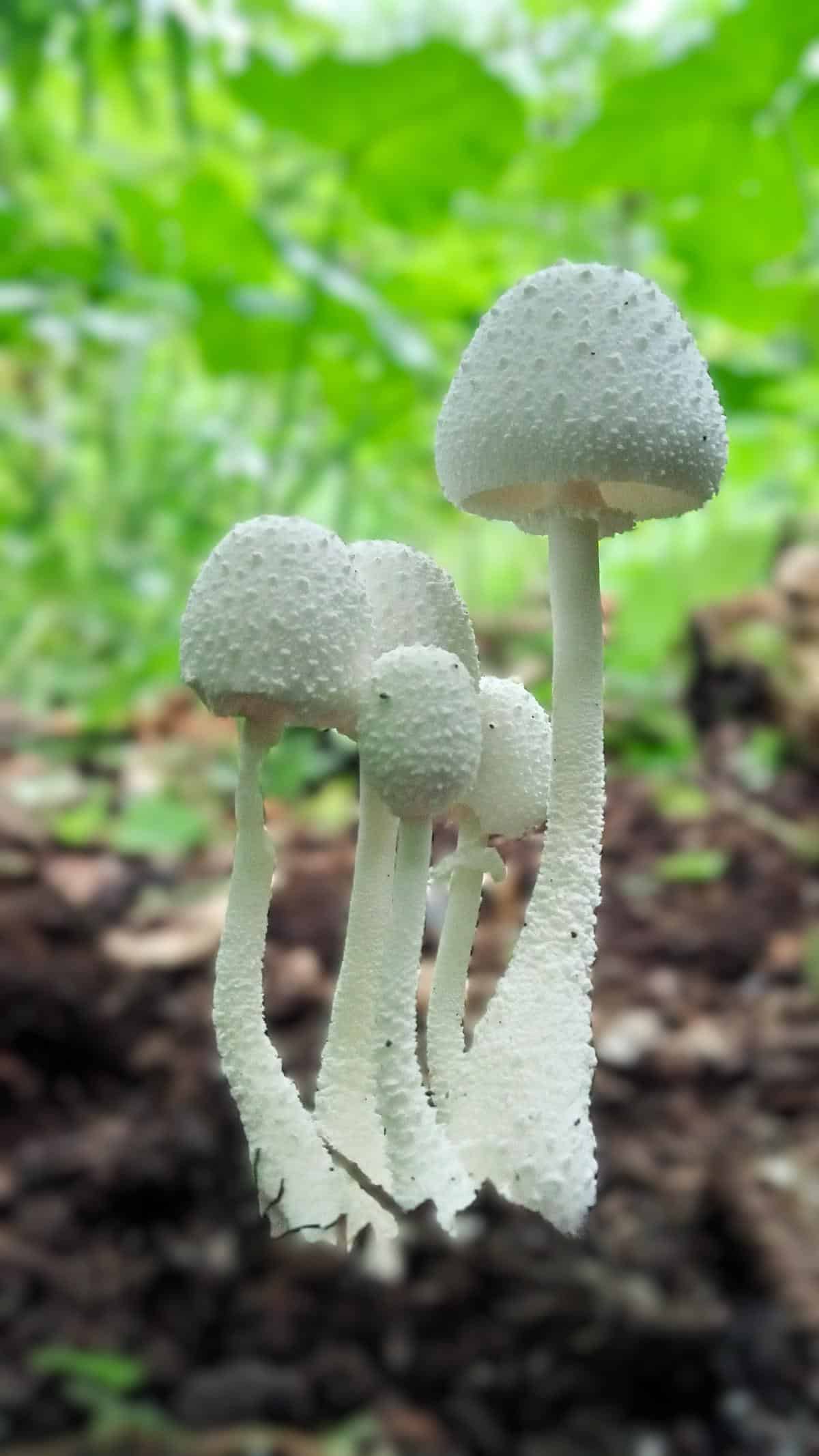
Jump to:
All About The White Greenhouse Mushroom
Leucocoprinus cretaceus is a member of the Agaricaceae family. While it is a tropical mushroom, it was first described to science based on a specimen found in Europe. French botanist Jean Baptiste François Pierre Bulliard named it Agaricus cretaceus in 1788 and noted its fluffy look and chalk-like whiteness.
This mushroom is native to tropical environments, but it is unclear where it actually originated. In the 1700s, exotic plants from the East Indies and India were cultivated in greenhouses and hothouses throughout Europe, which may indicate the origin of the fungi.
Scientists have given this species many names over the years. You’ll find it listed as Agaricus cretaceus, Lepiota cretacea, Leucoagaricus cretaceus, Pluteus cretaceus, Coprinus cepaestipes, Leucocoprinus cretatus, and more. The fungal taxonomy of this species has been very complicated and has evolved significantly since its original discovery.
In 1945, French mycologist Marcel Locquin classified this mushroom as Leucocoprinus cretaceus. Despite this seeming to settle the matter, this species’ name is still confusing and prone to changing. In 1953, Austrian mycologist Meinhard Michael Moser re-classified it as Leucoagaricus cretaceus. Now, both names are interchangeable. This species often switches classifications between Leucoagaricus and Leucocoprinus, depending on who you ask, due to unclear distinctions between the genera.
Germans call this mushroom “Kreideweißer Faltenschirmling” (chalk-white parasol). Swedish mycologists use “Vit Veckskivling” (white pleated mushroom) while the Dutch know it as “Krijtwitte Plooiparasol” (chalk-white pleated parasol).
The white greenhouse mushroom doesn’t grow in the wild much in North America. But, it does sometimes pop up in warmer states like Florida and California. Most often, it appears in houseplants and greenhouses because those environments suit it more.
The scientific term cretaceus translates to chalky and is derived from the Latin word creta, which means chalk.
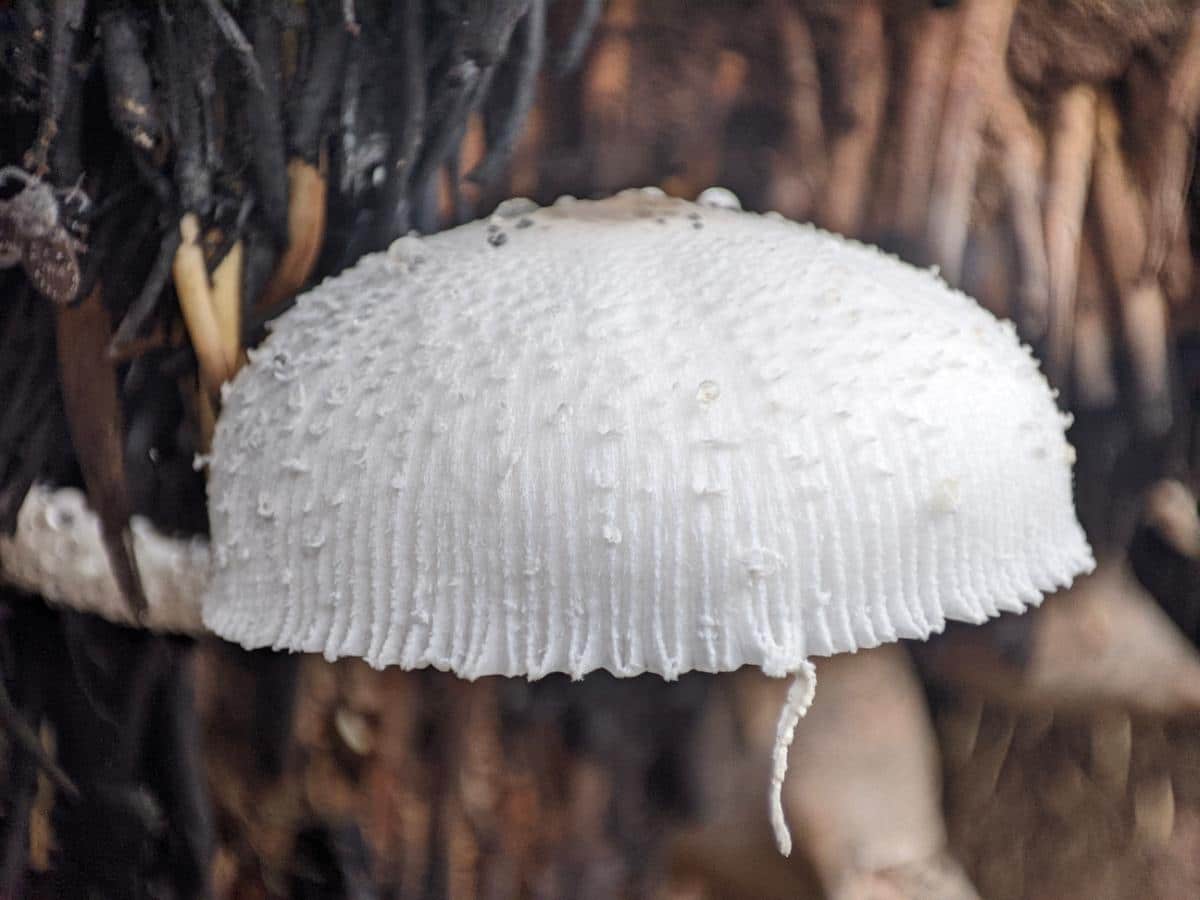
How Does The White Greenhouse Mushroom Spread
The white greenhouse mushroom grows worldwide. It travels in the soil of tropical plants and is an opportunistic grower. The fungus spreads mainly through sclerotia, which are tiny, hard clumps of fungal mycelium that work like resting spores. These structures let the mushroom sleep (be dormant) in the soil until it finds itself in good growing conditions. The sclerotia are small and easily transferred between containers when nurseries (or you!) transplant or repot plants.
This adaptable saprotroph breaks down dead organic matter in potting soil. It prefers soil mixed with multipurpose compost and coir.
Your houseplants create the perfect environment that matches this mushroom’s natural home. The steady temperature, moisture, and rich soil in potted plants give them ideal conditions to grow all year. This tough fungus can even grow on walls, floors, furniture, and carpets.
There is a possibility of this mushroom spreading from greenhouses to wild areas in regions where the temperature and climate are warm enough.
Leucocoprinus Cretaceus Identification Guide
Season
Year-round
Habitat
The white greenhouse mushroom is native to tropical areas, but grows around the world in houseplants and greenhouses. In warmer regions, it grows in mulch, woodchips, and compost.
It may grow singly, but more often, it appears in small to dense groupings or clusters (“troops”).
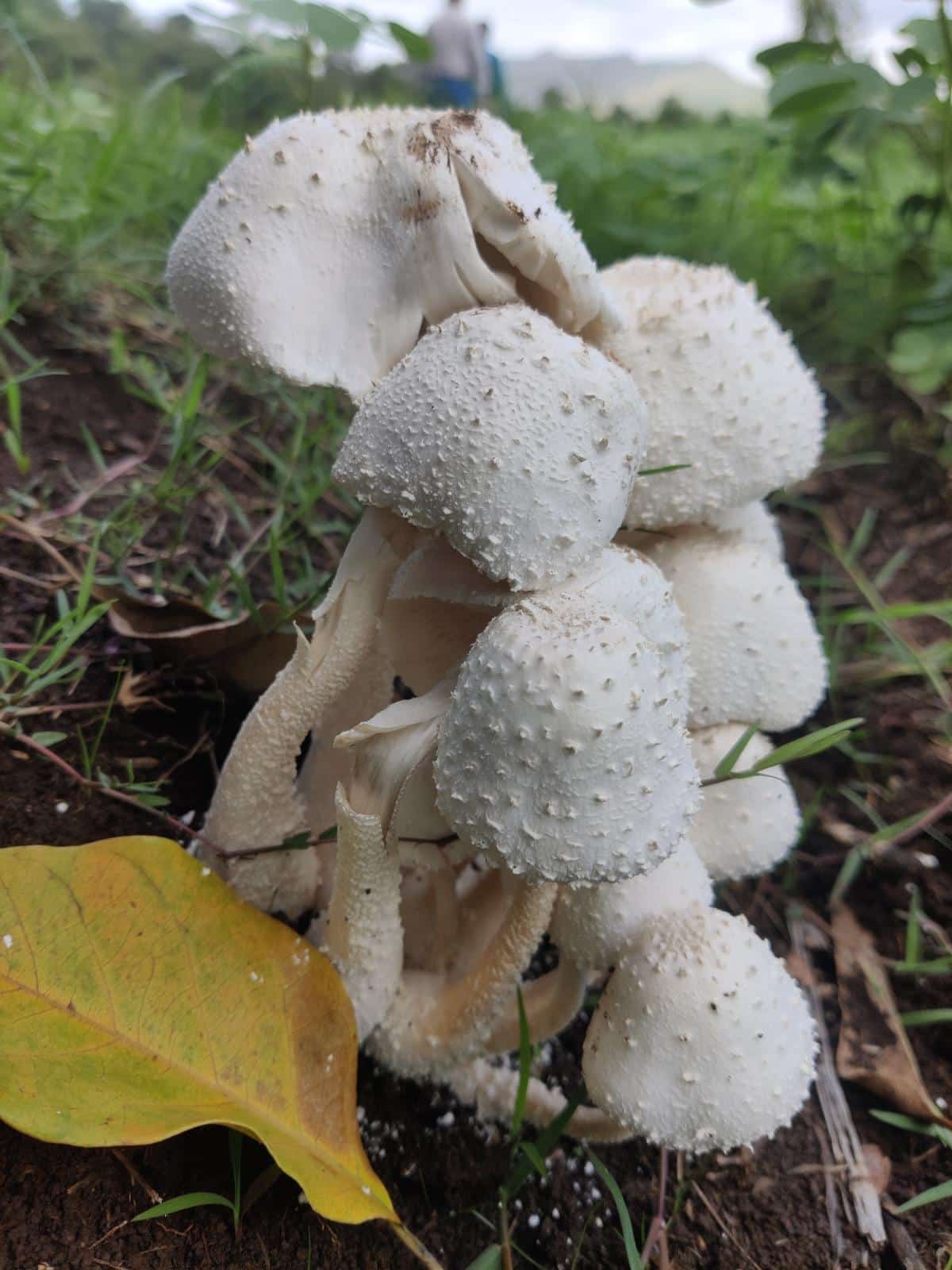
Identification
Cap
The mushroom’s cap is 0.8 to 3.1 inches across. When the white greenhouse mushroom is young, the caps are rounded and usually slightly blocky. With age, the caps spread out to become bell-shaped and eventually will flatten out. The cap is stark white with small, wart-like scales that create a textured surface. The center of the cap might develop a brownish-yellow shade as it ages.
If the mushroom is growing outside, the distinctive warts on the cap can be washed away, and this significantly changes the look of the species.
Gills
The gills are white to pale cream colored and don’t attach to the stem directly. They grow close together and have finely serrated edges that can turn slightly brown over time. The gills, in general, though, remain whitish through maturity. Many mushroom gills change color with age, so this is a notable feature.
When the white greenhouse mushroom is young, the gills are covered by a white partial veil. This veil protects the gills as the mushroom emerges. As the mushroom grows, the veil breaks and leaves remnants around the stem and sometimes the edges of the cap.
Stem
The stem is 1.2 to 4.3 inches long with a slightly swollen base. Along the stem are soft white scales that resemble the warts on the cap. When young, the stem is solid, but it starts to hollow out with age, and it’s common to find the stem “stuffed.” This means when you cut the stem in half vertically, it looks like someone stuffed cotton material in, and it doesn’t fill the entire stem.
Around the upper stem is a delicate white ring, which is a remnant of the mushroom’s partial veil. This ring is usually flared or pendant-like, like a skirt. The ring is fragile and may fall off or disappear with age.
Smell and Taste
The white greenhouse mushroom does not have a distinctive smell.
Flesh Color and Staining
The stem may bruise yellowish. The flesh is white and does not change color when cut.
Spore Print
The spore print is white to cream colored.
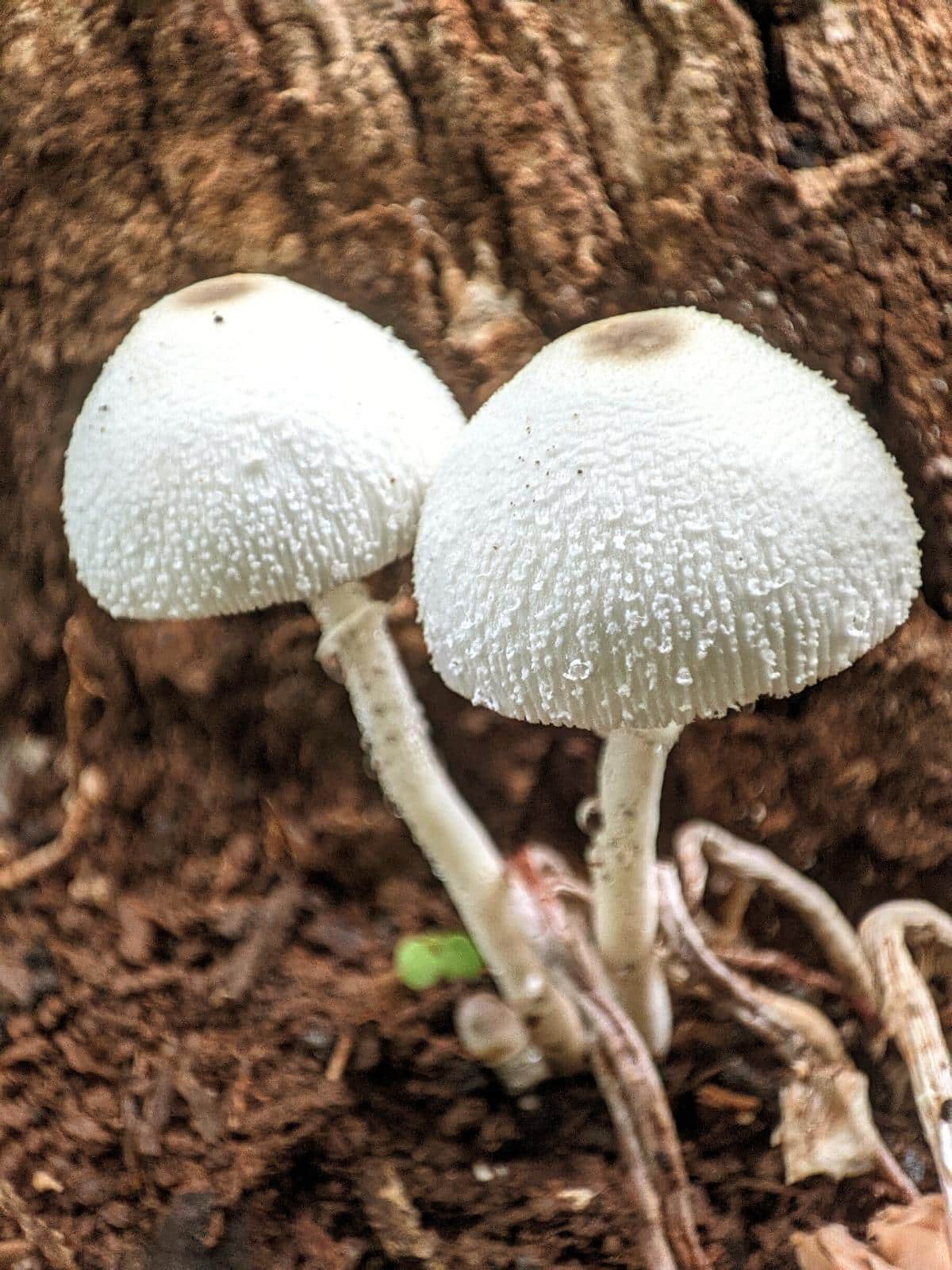
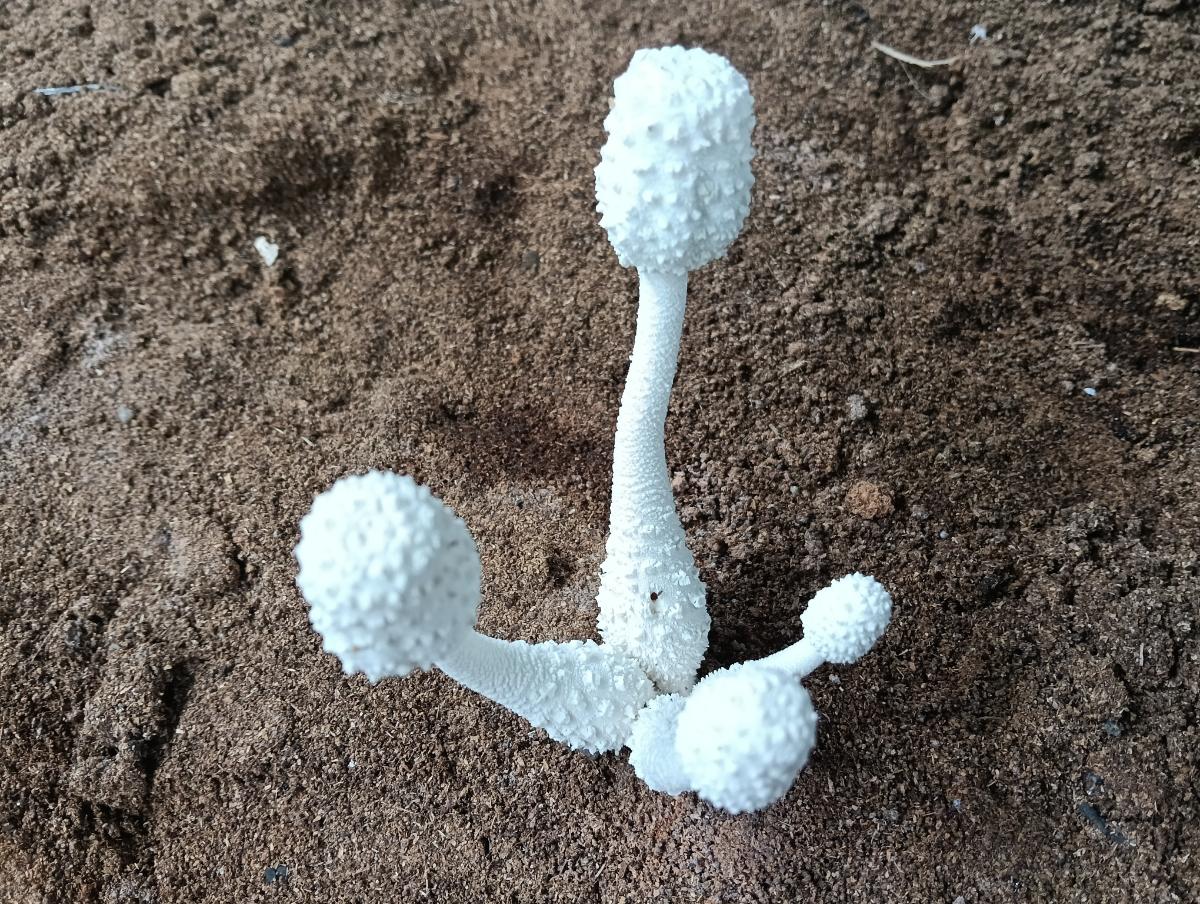
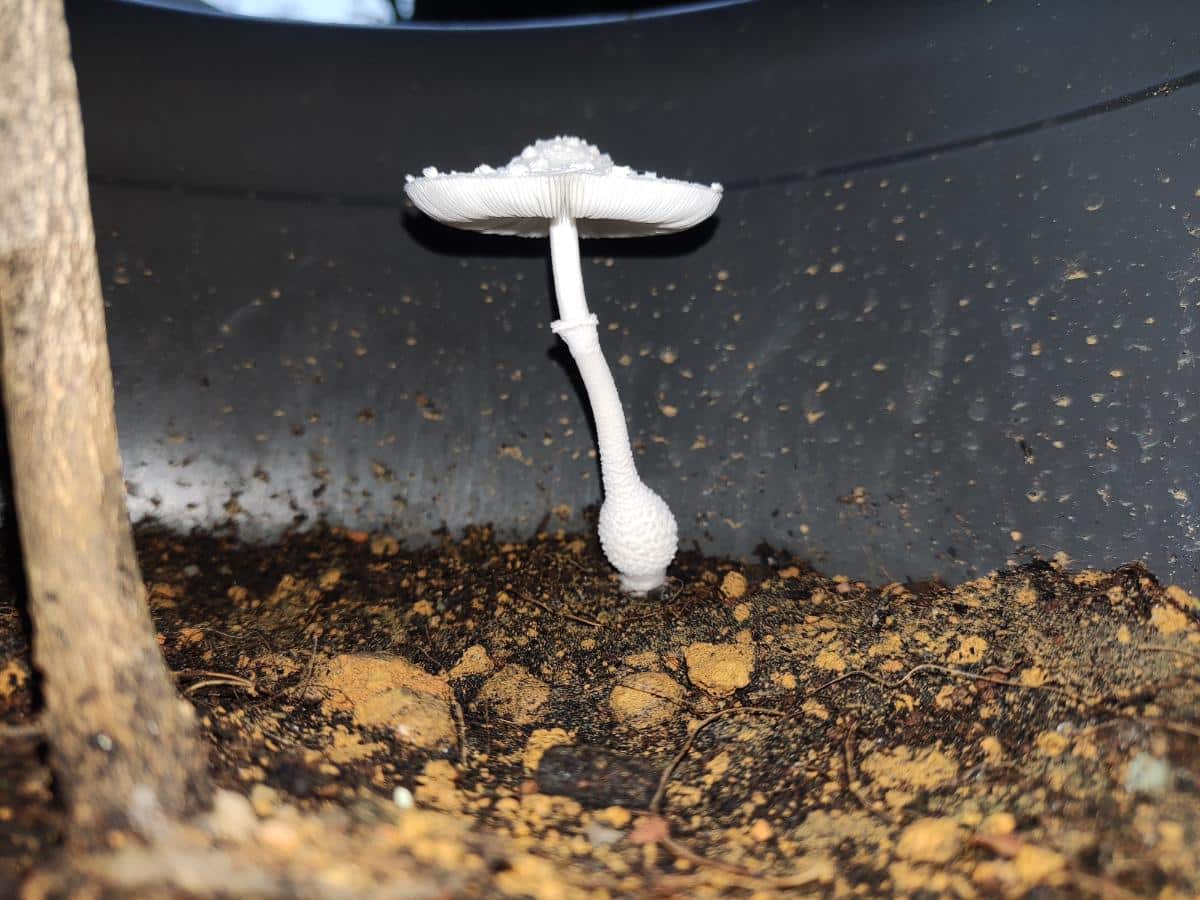
White Greenhouse Mushroom Lookalikes
Onion Stalk Parasol (Leucocoprinus cepistipes)
People often mix up L. cepistipes with L. cretaceus because they are both white, have bell-shaped caps, a partial veil, cap decorations, and grow in wood chips and houseplants. They’re also closely related. The primary difference is the stem — L. cretaceus has scales, while L. cepistipes has a smoother stem. L. cepistipes also has a more noticeable brownish center on its cap. The cap surface of L.cepistipes is also more granular or powdery instead of warty scales.
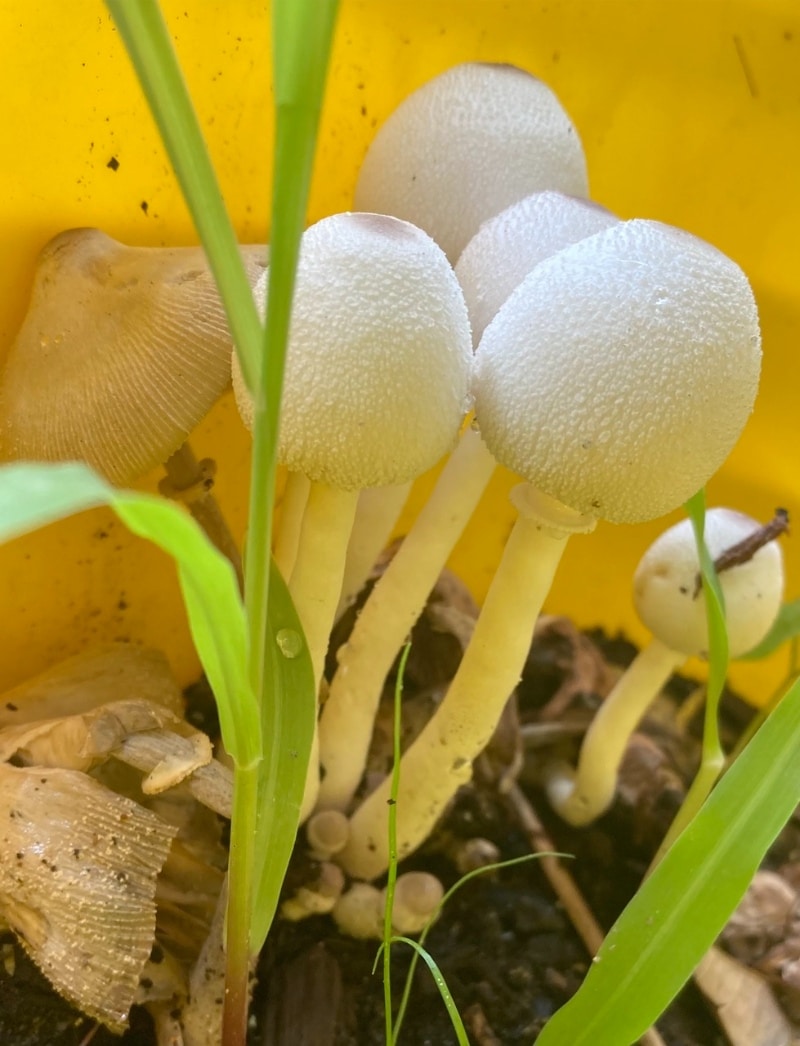
The Yellow Twin (Leucocoprinus birnbaumii)
It’s easy to tell these apart because one is stark white and the other is brilliant yellow. The yellow houseplant mushroom and the white greenhouse mushroom are closely related, love to grow in houseplants, and seemingly show up overnight. They also look almost identical physically except for their color.
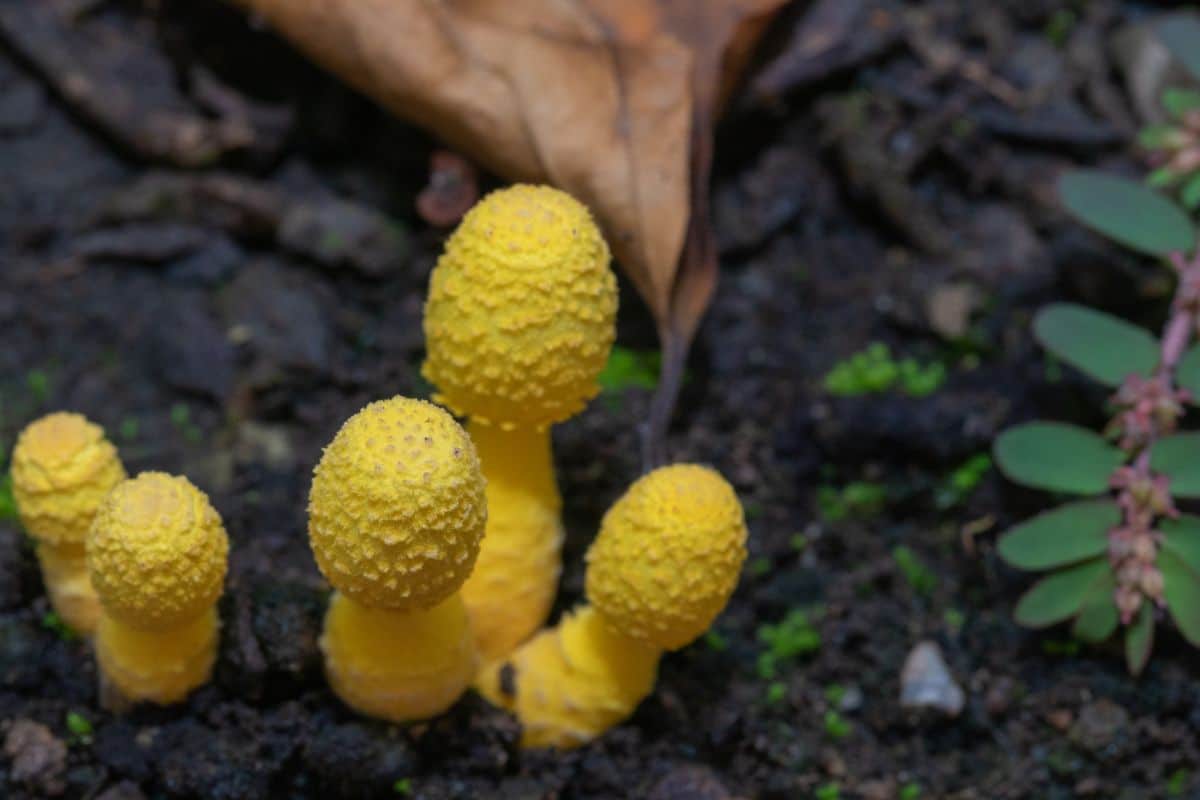
White Greenhouse Mushrooms In Your Plants: What To Do
Finding these large, fancy mushrooms in your houseplants or greenhouse can be alarming. They grow quickly, often popping up literally overnight. The good news is that they are not harmful to you or your houseplants!
This saprotrophic fungus only feeds on dead organic matter, not living tissue. They will not interfere with your plant’s roots or overall health. The white greenhouse mushrooms might actually help your plants by breaking down organic material into usable nutrients.
These mushrooms are not safe to eat and could be harmful if consumed. Experts have different views on how dangerous they are – some say they only cause stomach problems, while others warn of more serious issues. Because of these uncertain effects, no one should take the chance of eating them.

Should you remove white greenhouse mushrooms?
You don’t need to remove these mushrooms unless kids or pets might try to eat them. The mycelium has made itself at home in the soil and is not hurting anything. Removing the white mushrooms won’t get rid of the mycelium; the fruiting mushrooms are just one part of the overall organism. Getting rid of the mycelium is virtually impossible and generally not worth the effort or worry.
White greenhouse mushrooms tend to have a short life span, so if you wait 3-6 days, they’ll probably go away on their own. However, the mycelium is still in the soil, and they’ll likely fruit again at some point, but maybe not. If they do continue to fruit on occasion, it’s a sign of a healthy plant environment.
If you must remove the mushrooms, you can pick them and throw them away. It’s not dangerous to handle them (or any mushroom, really), and they can be thrown away or composted. This interrupts the mushroom’s life cycle so it can’t spread its spores to new plants. However, the mycelium is still there in the soil.
Another option is to scrape off the top 1-2 inches of potting soil, throw it out, and add new sterilized potting soil. This gets rid of the fruiting bodies and probably a good chunk of the mycelium, but likely not all of it. It may be enough to stunt the mushroom’s growth habit so it doesn’t fruit again, or not.
The final option is to completely repot your houseplants with new potting soil. Take your plant out of its pot and shake off the soil carefully without hurting the roots. Clean the container with bleach solution (one part bleach to ten parts water), and repot with fresh sterilized soil. This is usually enough to get rid of the mycelium and prevent future appearances of the white greenhouse mushroom.
While the mushrooms’ fruiting is not problematic for you or your plants, there are ways to prevent future growth, potentially:
- Improve lighting and airflow near your plants so the soil dries faster between waterings.
- Avoid overwatering since wet soil creates perfect mushroom conditions.
Common Questions About White Greenhouse Mushrooms
Are Leucocoprinus cretaceus mushrooms harmful to my houseplants?
These mushrooms are not harmful to your plants. They are saprotrophic fungi, which means they feed on dead organic matter in the soil. In fact, they can help your plants by breaking down materials into nutrients that plants can use.
What does it mean if I have mushrooms growing in my potted plants?
The appearance of white Leucocoprinus cretaceus mushrooms in your potted plants indicates that your soil is rich in organic matter and has good microbial activity. It’s a sign of a healthy soil ecosystem.
Should I remove white greenhouse mushrooms from my houseplants?
There’s no need to remove these mushrooms unless you have pets or children who might try to eat them. The mushrooms are part of a balanced ecosystem in your plant’s soil. They are not harmful to you plants.
Are Leucocoprinus cretaceus mushrooms toxic to humans or pets?
They are not dangerous (i.e. not deadly). However, they may cause some toxicity issues like gastrointestinal distress. It’s best to keep them out of reach of children and pets as a precaution.
How can I prevent the white greenhouse mushroom from growing in my houseplants?
The presence of these mushrooms isn’t harmful, so prevention isn’t strictly necessary unless you prefer not to see them.
To discourage mushroom growth, try improving lighting and air circulation around your plants, avoiding overwatering, and ensuring proper drainage. Another option is to repot your plants with sterilized potting soil.

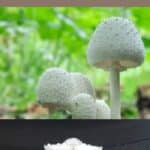

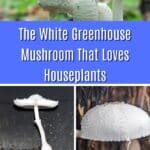



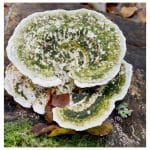
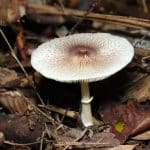
Leave a Reply